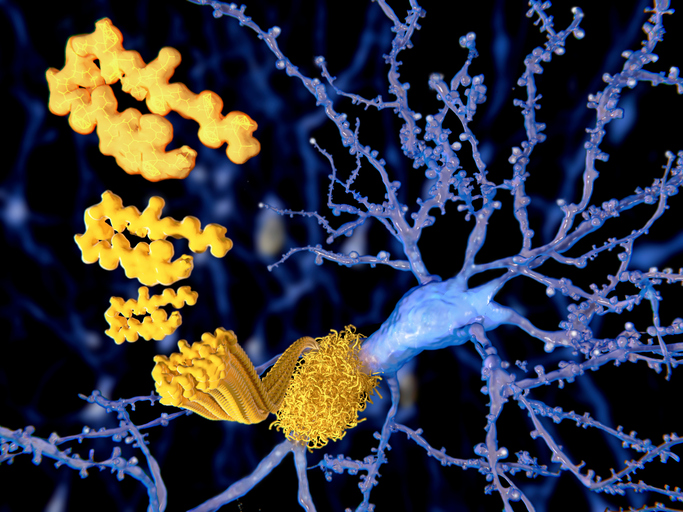
A team of Italian researchers analyzing the nutraceutical potential of four varieties of hops used to flavor beer have discovered a compound that when tested in the lab, can inhibit the clumping of amyloid beta proteins which have long been associated with the development of Alzheimer’s disease (AD).
The research team, led by Cristina Airoldi and Alessandro Palmioli of the University of Milano-Bicocca published in ACS Chemical Neuroscience, builds on previous research that has indicated that hops flowers could interfere with the accumulation of amyloid beta. The researchers feel that their discoveries may be a potential pathway to taking preventative measures agains the development of AD.
Aging is associated with the progressive accumulation of protein aggregates, which actively contribute to senescence and determine, at the central level, the onset of neurodegenerative diseases, of which Alzheimer’s disease (AD) represents 60–70% of the cases,” the researchers wrote. “One of the most peculiar features of this pathology concerns the time lag between the onset of the first symptoms and the triggering of the biochemical processes that cause it. The latter occurs many years in advance when the neuronal damage has already occurred.”
But AD is known to be the result and accumulation of many factors, a characteristic of the disease that has, to data, made the development of single-target drug ineffective as a treatment for it, once symptoms appear. Among the many indicators of the disease are aggregation of the Aβ peptide and extracellular deposition of cytotoxic aggregates, the metal-ion dysregulation, triggering Aβ aggregation and cytotoxicity, the reduction of acetylcholine (ACh) levels in the brain, the formation of intracellular neurofibrillary tangles (NFTs), and a general increase in misfolded proteins and oxidative stress.
For these reasons, the researchers wrote that “the prevention of AD rather than treatment can represent an important strategy.”
For their research, the team investigated hops extracts similar to those of four common hops varieties used for beer brewing. Of the four hops, the Tettnang hop extract—used in the brewing in many types of lagers and lighter beers—showed the most promise. After separating the extract into fractions, the one containing a high level of polyphenols showed the most potent antibiotic and aggregation-inhibiting activity and also promoted processes that allow the body to clear out misfolded, neurotoxic proteins.
The researchers then moved to testing its Tettnang hops extract in a C. elegans model and found that it protected the worms from AD-related paralysis, though the effect was not very pronounced.
The team said their data analysis showed that the molecular components mainly responsible for the neuroprotective action they demonstrated were feruloyl and p-coumaroylquinic acids, flavan-3-ol glycosides, and procyanidins. These molecules are Aβ oligomer ligands, hindering peptide fibrillation and neurotoxicity through their direct interaction with the target. They also reported that the hop extracts prevented cell death due to oxidative stresses and induced autophagic pathways.
“Given the precocity concerning the onset of symptoms with which preventive treatments must take place, diet can represent a very effective approach,” the investigators concluded. “Our results show that hop is a source of bioactive molecules with synergistic and multitarget activity against the early events underlying AD development. We can therefore think of its use for the preparation of nutraceuticals useful for the prevention of this pathology.”













